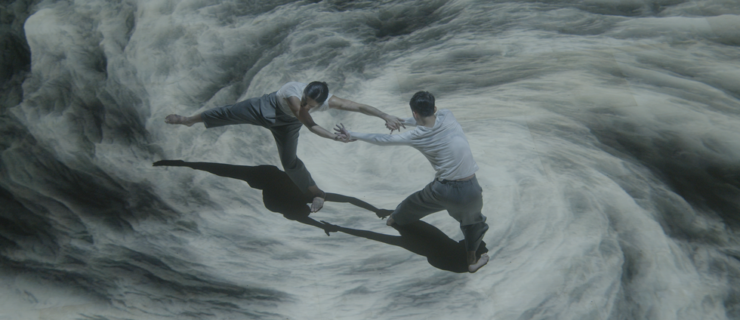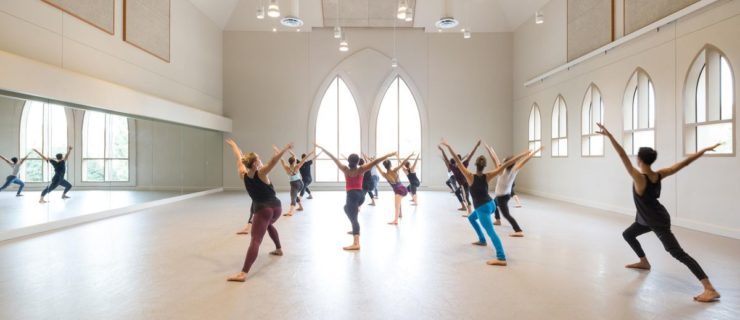The Unlikely Pairing of NFTs and Dance
For the majority of my choreographic career, I supplemented my income—and underwrote my dancers’ fees—with work in emerging technologies. I built websites and consulted on social media because, sure, the work was interesting, but mostly I just got paid exponentially more for tech stuff.
Personally, I don’t think time spent on technology is actually more valuable than time spent on art, but these narratives persist. Consider the myth of the starving artist (that you have to be long-suffering and poor to make good art) or the apprenticeship myth (that mastery of craft requires indentureship to an established, i.e., financially successful, artist). The stories we tell about artists’ labor are in pointed contrast to folks in tech: They get to move fast, break things and get rich.
The disparities between the dance and tech communities can seem pretty vast, yet the two have found an odd, contemporary synergy in NFTs: non-fungible (as in, one-of-a-kind) tokens (as in, a thing). NFTs are digital items that—despite the fundamental, unlimited duplicability of virtual media—can notionally be owned by a single individual. This ownership is documented by a cryptocurrency proof-of-purchase enabled by a technology called “blockchain” (a public, digital ledger that documents online transaction data). NFTs are thus digital objects defined by artificial scarcity. In contrast to the JPEGs and video files they are virtually indistinguishable from, NFT art is supposedly scarce, making it ostensibly collectable and valuable.

You’re not alone if you find this convoluted. Since the first NFT was minted in 2014, nerds across the art and finance worlds have argued about whether literally any of this makes sense. It’s not really clear that it does. Press coverage of multimillion dollar NFT sales by already prominent digital artists have had the effect of making NFTs appear like a means for artists to monetize their work, while simultaneously serving as a winner-take-all cash grab. Both perspectives have their merits.
Since then, several high-profile dance artists have minted NFTs of their work. Tap dancer Savion Glover is selling an NFT video of himself discussing his creative process; as of publication, this costs about $90 and includes a physical, signed commemorative print. Ballet star Natalia Osipova recently sold an NFT video of a solo from Giselle for about $15,000. That similar media is available, for free, through platforms like Facebook, YouTube, Twitter and libraries, hasn’t stopped folks from paying for the right to claim ownership of stuff graced—however contortedly—by Glover’s and Osipova’s aura. NFTs are an emergent expression of an old dance-world tradition. The image of 19th-century ballerina Marie Taglioni, for example, appeared on collectible snuffboxes, and her pointe shoes were hocked to fetishists. Selling stuff associated with famous dancers is a pastime almost as old as the Western dance tradition.
Controls built into NFTs grant artists unique means to maintain authorship and fiscal transparency. I, for one, believe artists having financial power is a good thing, and I support dancers maintaining agency in their careers as well as the ability to monetize anything they want. (Grab that cash, Glover and Osipova.) It is, however, worth noting that these artists were international stars before releasing NFTs. This technology works for Glover and Osipova because they were already demonstrable commercial hits, an economic phenomenon referred to as a “winner-takes-all market.” There is little evidence that NFTs are a practical means for most dancers to make money.
“Whether you think NFTs are a way for artists to manage authorship, an emergent performance platform, or a metastatic outgrowth of tech-bro capitalism, you’re right.”
Sydney Skybetter
Still, the complex procedural qualities and algorithmic labor contained within NFTs have already provided useful compositional grist to many choreographers. Michelle Ellsworth and her colleagues have minted NFTs that are “owned” by a fake rock that they made and left in a desert (the digital key is inside cement), essentially preventing the transfer of ownership of her work. Choreographic technologist and Dance Magazine “25 to Watch” inductee Maya Man recently sold an NFT titled “can I go where you go?” to scrutinize software as a form of choreography. Artist and dance culture warrior Lisa Niedermeyer takes 3-D scans of subjects and creates NFT portraits that in effect concretize each person’s ownership of their own bodily data. Dancer and physicist Mariel Petee created an artificial intelligence that choreographs in response to her dancing body, and is selling NFTs of the resulting media to pay for a performance of AI-generated choreography. These examples, among many others, illustrate the potency of NFTs as a platform for creative exploration beyond the transactionality of digital dance pay-for-play.
While there is much to be excited about where NFTs meet dance (or, more broadly, where choreography meets computation), the story I’ve heard most frequently centers on the hope that dancers’ NFT sales might be a salve for our recessionary, COVID-inflected moment. Such uplifting narratives can be read darkly, though, and reveal the longstanding desperation of a creative community unable to save its least empowered members from precarity. Whether you think NFTs are a way for artists to manage authorship, an emergent performance platform, or a metastatic outgrowth of tech-bro capitalism, you’re right.





